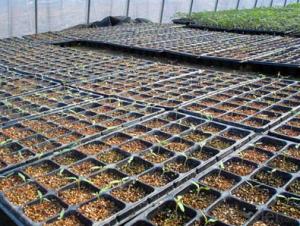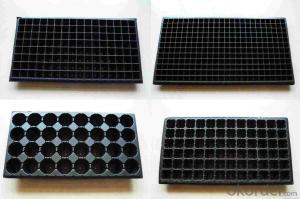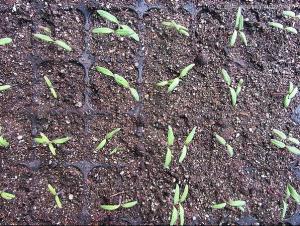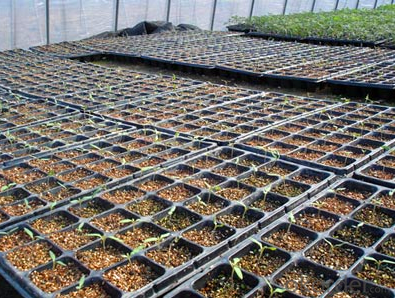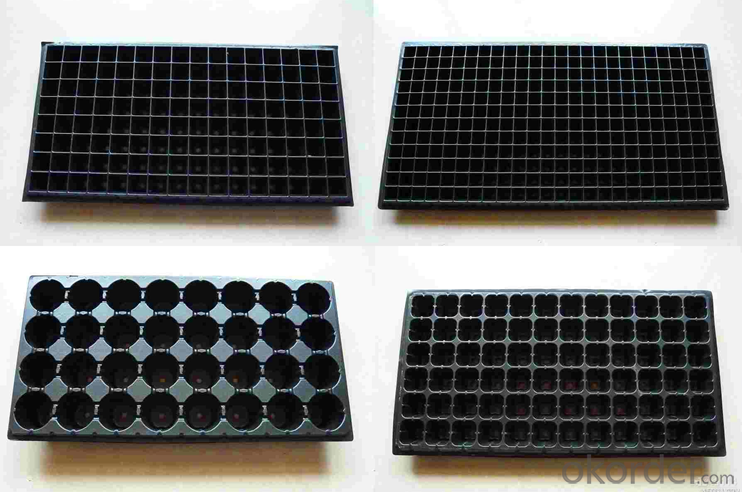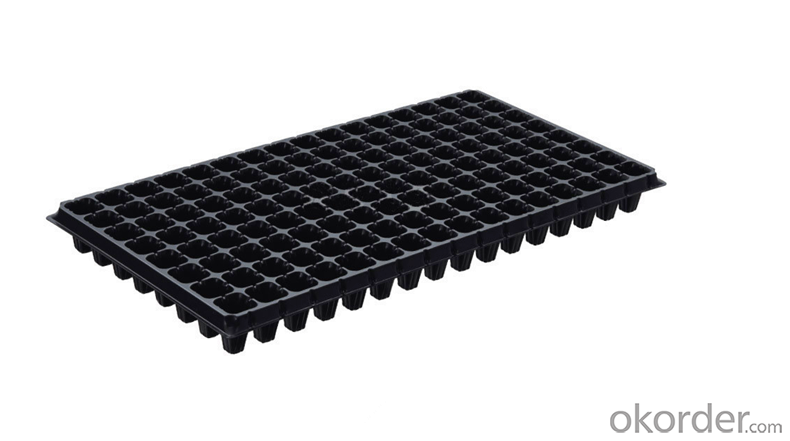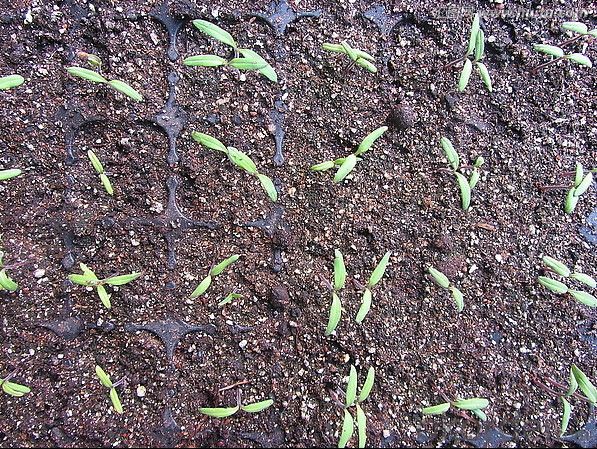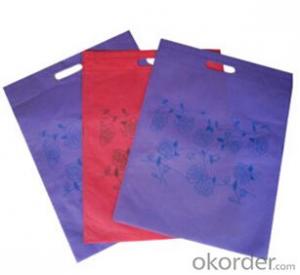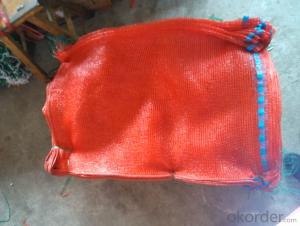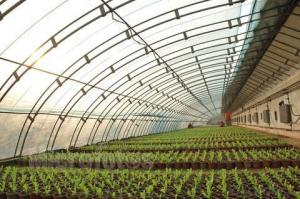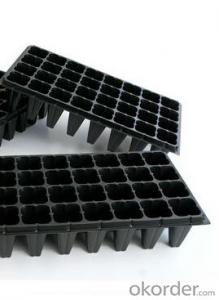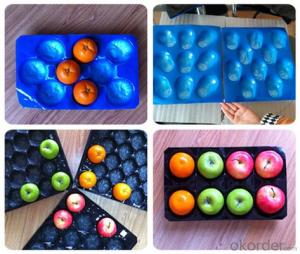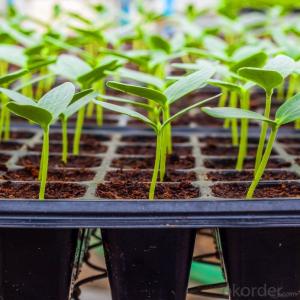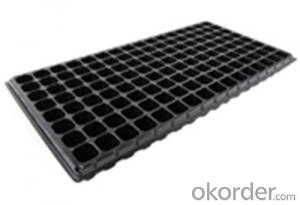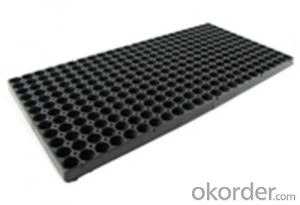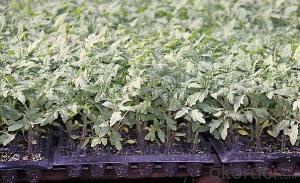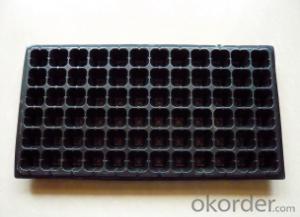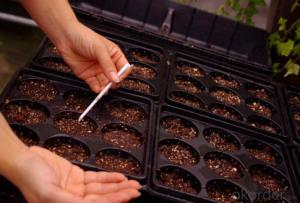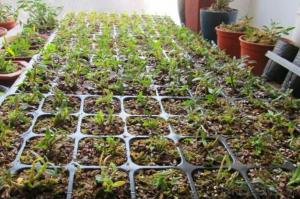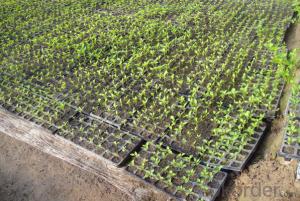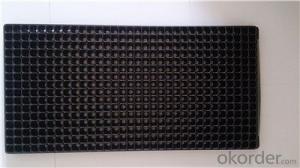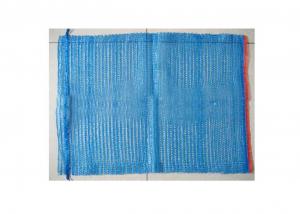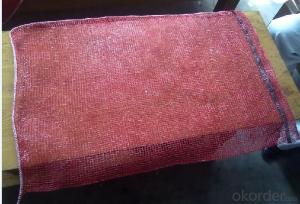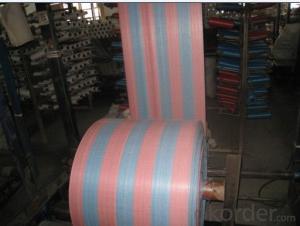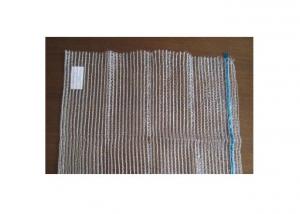288 Cells OEM Plastic Nursery Tray&Lids Plastic Nursery Seed Plug Trays for Propagation
- Loading Port:
- China main port
- Payment Terms:
- TT OR LC
- Min Order Qty:
- 3000 pc
- Supply Capability:
- 2000000 pc/month
OKorder Service Pledge
OKorder Financial Service
You Might Also Like
Specification of Plug Trays HIPS Made Plastic Plug Tray for Greenhouse (Growing and Seedling):
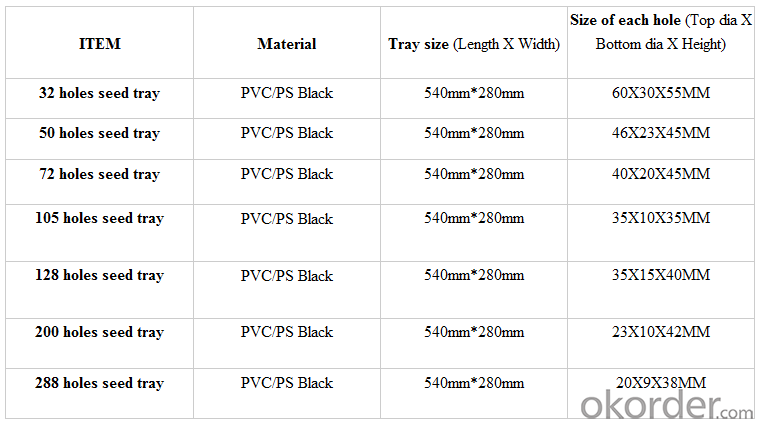
Features of Plug Trays HIPS Made Plastic Plug Tray for Greenhouse (Growing and Seedling):
· Material: HIPS
· Thickness: 0.5mm-1.5mm, Standard:1mm
· Weight: 80g(±5)g-230g(±5)g, Standard weight:155g(±5)g
· Size: length:490mm-540mm, width:190mm-345mm,depth:25mm-150mm
· Standard:540mmX280mm
· Cell count: 18-512
· Package: In Carton
· Warrenty: 8-10 times
Packaging & Delivery
Packing Detail: export standard carton or large bags
Delivery time: 4 million per momth after receipt of deposit
Advantage:
Waterproof, UV-resistant, extrusion-resistant
Easy carry for young seeding plant and grow
Service:
1. Quick, efficient and professional response within 24 hours, 14 hours online services
2. 10 years manufacturing and exporting experience in agriculture field.
3. Technical support and solution by chief engineer.
4. Strict quality control system & team, high reputation in the market.
5. Full range of irrigation products for choice
6. OEM/ODM services
7. Accept sample order before Mass Order
Picture of Plug Trays HIPS Made Plastic Plug Tray for Greenhouse (Growing and Seedling):

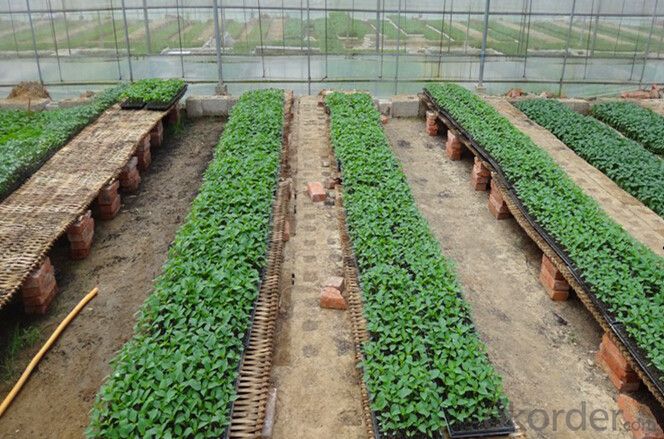
FAQ of Plug Trays HIPS Made Plastic Plug Tray for Greenhouse (Growing and Seedling):
Q: 1.How long is the production time?
A: Usually one to two weeks.
Q: 2.How is the seed tray being packaged?
A: They can be packaged in carton or pallets. Carton size is 1375px*725px*1250px.
Q:3.How many times can the seed tray be used?
A: Under the same environment, it is decided by the thickness. Usually 0.6mm thickness can be used for 1 or 2 times.
1.0 thickness can be used for 3-4 times. 1.5 thickness can be used for 8-10 times.
- Q: Can nursery trays be used for starting indoor trees?
- Yes, nursery trays can be used for starting indoor trees. Nursery trays provide a convenient and efficient way to start seeds or propagate tree cuttings indoors. They provide the necessary space and drainage for the roots to develop, making them suitable for the initial growth stages of indoor trees.
- Q: Are nursery trays suitable for starting plants for container gardening?
- Yes, nursery trays are suitable for starting plants for container gardening. They provide a convenient and organized way to start seeds or propagate plants, allowing for easy transplanting into larger containers once the plants have developed. Nursery trays also promote healthy root growth and can be easily labeled for better organization and identification of different plant varieties.
- Q: What are the benefits of using plastic horticultural containers for plant propagation?
- Plastic horticultural containers offer several benefits for plant propagation. Firstly, they are lightweight and easy to handle, making it convenient to move and transport plants. Additionally, plastic containers are durable and long-lasting, providing a cost-effective solution as they can be reused multiple times. They also promote better drainage and aeration, preventing waterlogging and root rot. Plastic containers are also available in various sizes and shapes, allowing for better control of plant growth and root development. Finally, plastic is resistant to pests and diseases, minimizing the risk of plant damage.
- Q: there is a plastic guard at the front, as well as plastic on the sides and back.how do i make it shine? any specific products?
- Could okorder
- Q: Can nursery trays be used for vertical farming?
- Yes, nursery trays can be used for vertical farming. These trays are designed to hold small plants and provide optimal conditions for their growth. In vertical farming, nursery trays can be stacked vertically, allowing for efficient use of space and maximizing the number of plants grown. Additionally, nursery trays facilitate easy monitoring, watering, and nutrient supply to the plants, making them suitable for vertical farming systems.
- Q: What is the best ground cover for attracting beneficial birds?
- One of the best ground covers for attracting beneficial birds is the clover. It provides a dense and low-growing habitat that offers both food and shelter for various bird species, including ground-feeding birds like sparrows and finches. Additionally, clover attracts insects, which are an essential food source for many birds.
- Q: I know what it stands for, but it gets to scientific for me. Basically, my airsoft gun's frame or whatever I think is quot;ABS PLASTICquot;, what makes ABS Plastic better/worse than just casual quot;plasticquot;, and since I'm still waiting to recieve my gun, can anyone list some items that are made of ABS plastic, and they're in a regular household? Thanks a lot.
- Acrylonitrile okorder / Hope this answered your question!!
- Q: Can agricultural plastic products be used for honey extraction?
- No, agricultural plastic products are not suitable for honey extraction.
- Q: Do nursery trays come with dividers to prevent cross-contamination of plant species?
- Yes, nursery trays often come with dividers to prevent cross-contamination of plant species. These dividers help maintain the integrity of each individual plant and prevent any potential mixing of seeds, soil, or water between different species.
- Q: if not why does it burn and smell like a plastic when burnt...
- Kurkure Chips
Send your message to us
288 Cells OEM Plastic Nursery Tray&Lids Plastic Nursery Seed Plug Trays for Propagation
- Loading Port:
- China main port
- Payment Terms:
- TT OR LC
- Min Order Qty:
- 3000 pc
- Supply Capability:
- 2000000 pc/month
OKorder Service Pledge
OKorder Financial Service
Similar products
Hot products
Hot Searches
Related keywords
